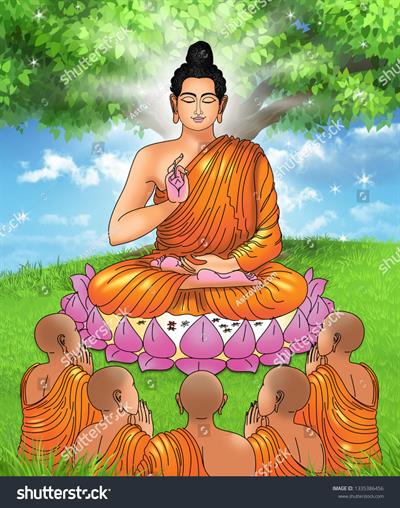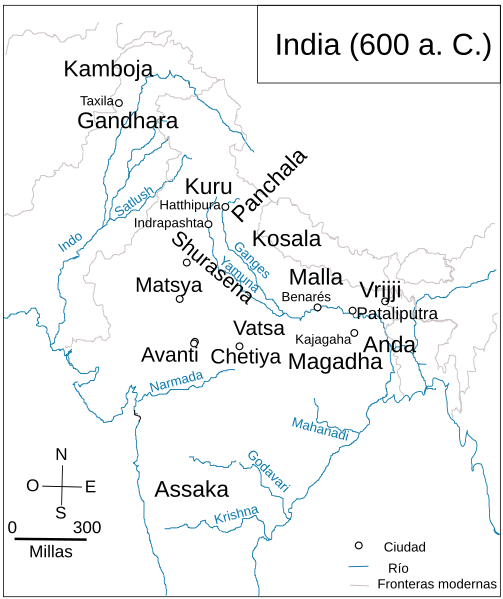PDF chapter test TRY NOW
In ancient India, the middle of the first millennium B.C. was a period of seeking and changing topics of religion and philosophy.
Several reforming movements reflected the spirit of the times. Humanitarians and theistic groups grew in strength and popularity as public belief in animal sacrifice and other barren rites waned.
The new movement's thinkers were pure intellectual philosophers who saw life as a philosophy of power and knowledge. Buddhism was merely a stage in Hinduism's evolution.

Buddha teaches his students
Mahavira and Gautama Buddha represented this new awakening in the sixth century.
Role of iron in a changing society:
1. Iron had an important role in this societal revolution.
2. The Gangetic Valley's fertile soil and the adoption of iron research in this area increased agricultural production.
3. Iron aided in the manufacturing of crafts.
4. Trading and exchange centers arose as a result of agrarian excess and a growth in craft products.
5. There was an increase in the number of towns and cities.
Gana - sanghas and Kingdoms:
The polity of Gana-Sanghas was an alternative to the kingdom system. Unlike kingdoms, the gana-sanghas were primarily found in the Indo-Gangetic Plain's periphery, in the Himalayan foothills, northwestern India, including Punjab and Sind, and sections of central and western India.
It was obvious that Gana-Sanghas tended to congregate in steep, less fertile places. The kingdoms typically followed orthodox traditions, but the governing clans in the gana-sanghas followed more or less egalitarian customs.
The gana-sanghas were anti-Vedic, and their rejection of the Vedic traditions shows that they followed an older or alternate tradition.
Important!
The term ‘gana’ means ‘people of equal status’.
‘Sangha’ means ‘assembly’.
The gana - sanghas covered a small geographical area ruled by an elite group. The gana sanghas practiced egalitarian traditions.
The Janapadas were the most powerful kingdoms in Vedic India. By the \(6\)th century B.C., there were possibly \(22\) different Janapadas.
As iron was developed in parts of Uttar Pradesh and Bihar, the Janapadas grew more strong and evolved into Mahajanapadas. The Indian Subcontinent had sixteen Mahajanapadas between \(600\) and \(325\) B.C.
Sixteen Mahajanapadas (Great Countries):
There was a rise in the development of a few kingdoms that were prominent in the sixth century BCE, earning the moniker Mahajanapada or vast country.
The Romans, commonly known as 'janas,' are now the most dominant tribes. The phrase janapada was popularized as a consequence of this, to jana denoting "people" and pada signifying "foot."
\(16\) Mahajanapadas:
Anga, Magadha, Vajji, Malla, Kasi,Kuru, Kosala, Avanti, Chedi, Vatsa,Panchala, Machcha, Surasena, Assaka,Gandhara and Kamboja.
The principal kingdoms of Vedic India were known as Janapada. In Mahajanapada, a new form of socio-political development was taking place. Mahajanapada was split into several geographical zones. There were sixteen Mahajanapadas in total.

The four major Mahajanapadas were as follows:
1. Magadha in Bihar
2. Avanti in Ujjain
3. Kosala in Eastern Uttar Pradesh and
4. Vatsa in Kausambi, Allahabad
